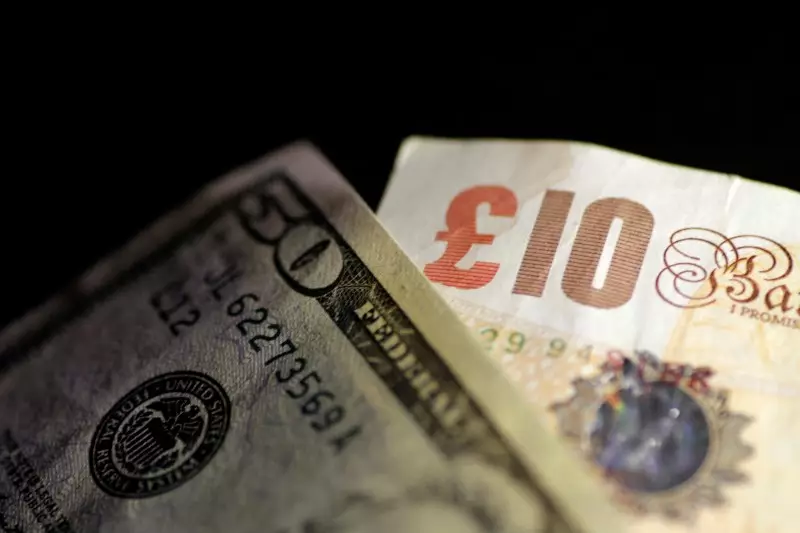The US dollar has experienced notable volatility recently, exhibiting a slight decline on Thursday while maintaining proximity to two-year highs. This movement follows the Federal Reserve’s announcement regarding a deceleration in the pace of anticipated interest rate cuts. As of early Thursday, the Dollar Index, which measures the dollar against a basket of six major currencies, saw a minimal decrease of 0.1%, settling at 107.670. This slight retreat comes after the dollar had reached a peak not seen in over two years on Wednesday, primarily fueled by the Fed’s updated projection on rate cuts.
The Federal Reserve’s adjusted outlook, now predicting only an additional 50 basis points of easing in 2025—significantly reduced from the previously anticipated 100 basis points as of September—has had a contrasting impact on market sentiment. Analysts at ING have noted that this “hawkish re-tuning” of the Fed’s communication could fortify the dollar’s upward trajectory well into the next year. The expectation of a pause in rate changes during January, along with a cautious 11 basis-point adjustment tagged for March, suggests a strengthened dollar position, setting a high threshold for any data that might threaten this advantage.
Amidst these fluctuating sentiments, attention is shifting towards upcoming economic reports, particularly the third-quarter GDP announcement. Forecasts indicate a downward adjustment in annualized growth, projected to slide to 2.8%, down from 3.0% in the preceding quarter. Such economic indicators are critical in shaping investor perspectives and can serve as a catalyst for further dollar fluctuations. A more robust than expected GDP growth rate could solidify the belief in a strong dollar narrative, while disappointing figures could ignite uncertainty, prompting market shifts.
Across the Atlantic, the British pound saw an uptick, trading 0.7% higher against the US dollar at 1.2662. This bounce back is occurring just before the Bank of England (BOE) holds its policy-setting meeting. Market expectations lean towards the BOE maintaining its current rates amidst persisting inflationary pressures. Analysts are particularly interested in any subtle modifications to the forward guidance and the anticipated vote split—predicted to be an 8-1 split favoring the status quo.
The new guidance from the BOE is expected to reflect a careful approach to future monetary easing while firmly addressing ongoing inflation concerns, particularly in the service sector and wages. Such a cautious communication strategy is designed to mitigate market volatility and maintain investor confidence in the UK’s economic stability.
Meanwhile, in the Eurozone, the euro has also displayed resilience, with EUR/USD climbing 0.6% to 1.0415 after a significant decline. Recently, the European Central Bank (ECB) has exhibited a more aggressive stance on interest rate cuts, having reduced its benchmark rate for the fourth time this year. ECB President Christine Lagarde indicated that if the economic data aligns with their forecasts, a further reduction in rates could be anticipated in 2025.
The current inflation rate for the eurozone stands at 2.3%, with the ECB targeting a return to its 2% goal by the following year. As inflation pressures appear to ease, the euro’s trajectory remains tied closely to ongoing developments in ECB policy, suggesting a potential for further shifts in the forex markets.
In Asia, the landscape reflects a mix of optimism and caution. The USD/JPY currency pair surged by 1.5% to 157.13, a notable breach above 155 for the first time since late November. This movement follows the Bank of Japan’s decision to maintain its current rate, resulting in disappointment among traders hopeful for a December rate increase. Following two rate hikes earlier this year, the BoJ’s stance appears to highlight a cautious outlook for 2025, reiterating the need for a balanced approach to monetary policy.
Additionally, the USD/CNY has risen 0.3% to 7.3078, reaching levels not seen since September. The Chinese yuan faces pressure from the anticipated loosening of monetary policy as indications of more stimulus efforts to boost growth surface. The contrasting approaches of major central banks are shaping currency trends, reflecting the interconnected nature of global finance.
The US dollar’s fortunes are intimately tied to central bank policies both domestically and globally. As the Fed signals a more cautious approach to rate adjustments, other economies are grappling with their monetary strategies against a backdrop of inflation and growth concerns. Investors must remain vigilant, monitoring economic indicators, central bank communications, and currency trends that could influence the broader financial landscape in the months to come.

